An afternoon of windswept walking, a shopping trip along cobbled streets – however you want to spend the weekend, England’s small towns and villages are perfect for a few lazy days away from the city.
Rye, East Sussex
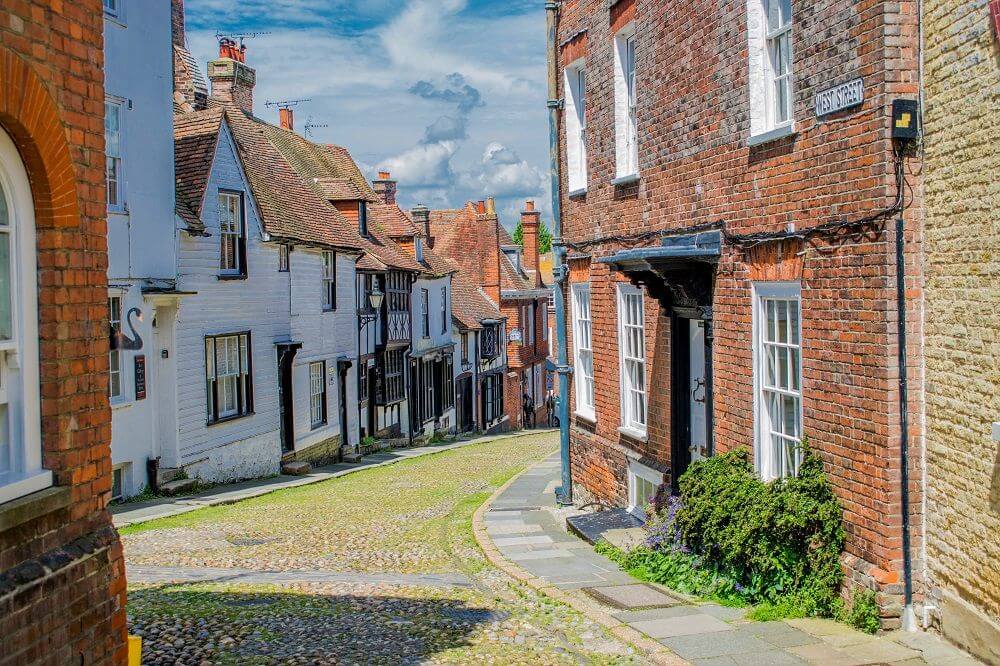
Rye has an intriguing smuggling history.
With cobbled lanes and old wood-beamed houses, Rye is one of England’s prettiest villages. It is also full of mystery – four hundred years ago, its creaking inns were meeting places for smugglers trafficking goods to and from the continent.
Beyond the village, Romney Marsh was where the smugglers hid, communicating in the dead of night with owl-noises. Today, the marsh is enjoyed by walkers and is a great place to spot birdlife.
Rye’s mix of peculiarity and charm has attracted writers and artists for centuries. Pay a visit to Georgian Lamb House, where Henry James worked on three of his novels.
Located where three rivers meet the sea, Rye is a popular place for water-based activities. Take a sailing or windsurfing lesson, or hire a dinghy, paddleboard, or kayaks.
Sussex is arguably England’s best wine region, and there are more than ten vineyards near Rye alone. Visit Chapel Down, one of England’s top sparkling wine producers, or Sedlescombe, the country’s oldest organic vineyard.
Where to eat: Tuscan Kitchen is a popular Italian restaurant run by a Florentine chef. Book in advance.
Where to stay: The George in Rye is a renovated Georgian house in the center of the town with gorgeous rooms.
How to get there: By car: driving from London takes around two hours via the M20 or A21. By train: depart London St Pancras and change at Ashford International for Rye (www.southeasternrailway.co.uk) or depart London Victoria and change at Hastings (www.southeasternrailway.co.uk).
Southwold, East Suffolk
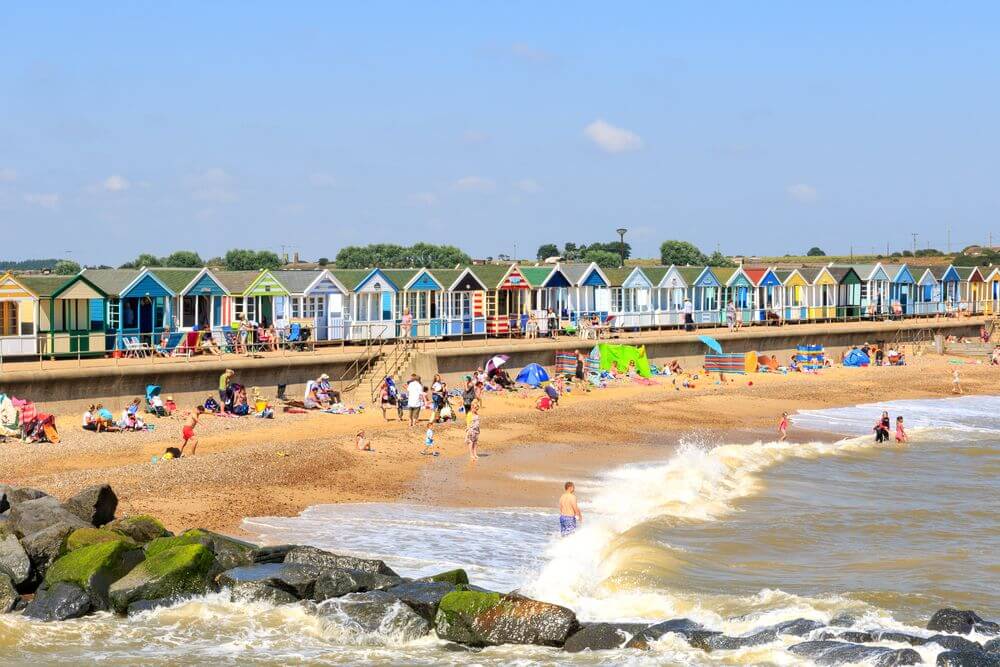
Southwold has all the elements of an English seaside town, including beach huts.
The Victorian seaside town of Southwold is as English as it comes. Wander down the bunting-clad high street, stop for tea and cake, stroll along the promenade with fish and chips, or head to the beach with its pier and colorful beach huts.
Award-winning Adnams Brewery has been brewing beer in the town since 1872. Now also making gin and vodka, they offer tours and tastings of their brewery and distillery as well as gin-making sessions.
The real highlight of Southwold is the surrounding landscape of marshes and huge, empty skies. Take the ferry across the River Blythe and walk through the Walberswick Nature Reserve. Look out for migrating birds, waders, geese and maybe even the odd reed cutter harvesting reeds for thatch. Seafood shacks and cozy pubs await you.
Where to eat: Down by the harbor, Sole Bay serves up delicious fresh fish, lobster and oysters caught from their own boat.
Where to stay: The Swan is owned by Adnams Brewery and has bright, stylish rooms moments from the sea.
How to get there: By car: the journey takes around two hours 30 minutes via the A12. By train: depart London Liverpool Street and change at Ipswich for Halesworth. At Halesworth, take a bus or taxi to Southwold (www.greateranglia.co.uk).
Whitstable, Kent
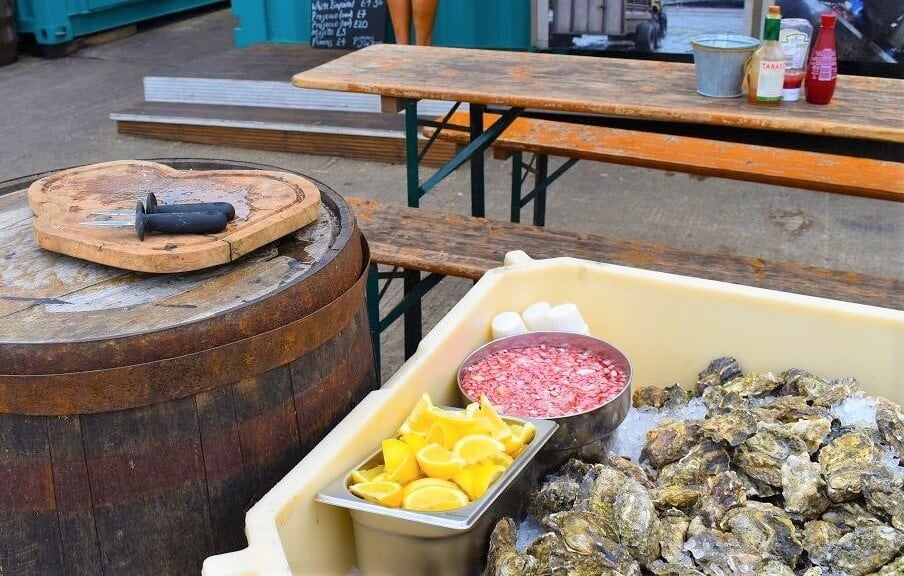
Oysters are always on the menu in Whitstable.
Whitstable may seem humble, but in fact, this Kent village is world-famous – for the three million oysters it harvests every year. Oyster-themed things to do (besides eating them, of course) include watching as they are unloaded down at the 200-year-old harbor, cooking them, and seeing where they are farmed.
Away from the harbor, Whitstable’s high street is another place to have a stroll. You’ll find art galleries and shops selling ice cream, stripy Breton tops, coastal-inspired jewellery, and nautical-themed homewares.
The many coastal walks around Whitstable include a 20 KM route to Faversham which takes you along the shoreline with views of sea and sky. There is no shortage of bike trails either – one of the nicest is the Crab and Winkle Way to Canterbury.
Where to eat: Samphire is a bistro with a menu full of fresh seafood and other local produce.
Where to stay: Hotel Continental has beach-chic rooms with views of the sea.
How to get there: By car: driving from London takes around one hour and 30 minutes. By train: take the train for Ramsgate from London Victoria (www.southeasternrailway.co.uk).
Blakeney, North Norfolk
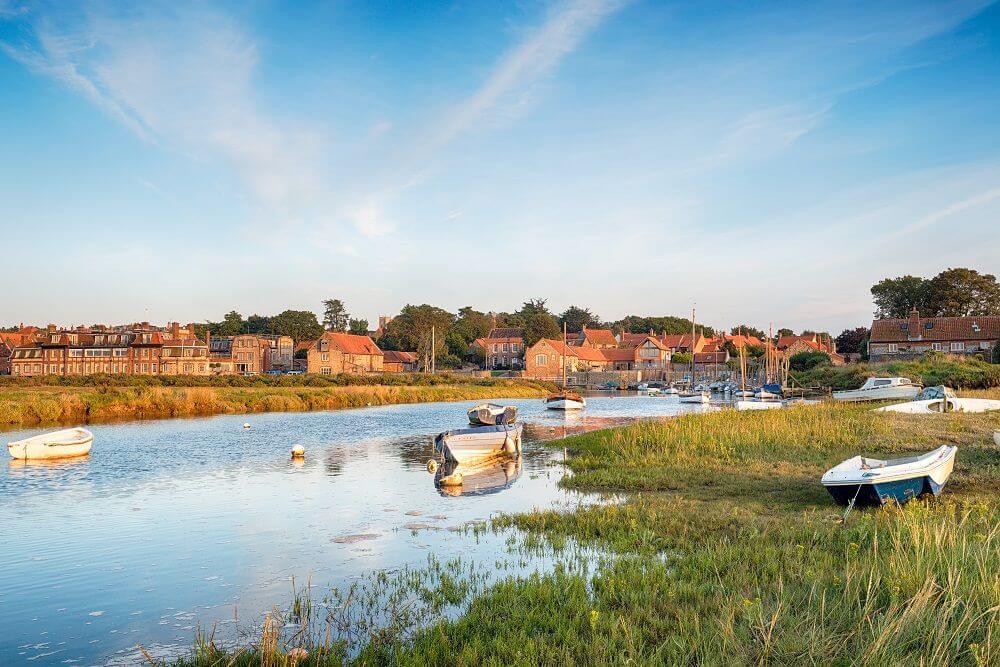
The salt marshes around Blakeney are unspoiled and beautiful.
Blakeney was once a thriving medieval fishing port, until the sea suddenly receded, leaving the salt marshes to the geese and the gulls. Today, this village of Georgian houses is a popular bolthole, with a pretty quay and a stunning natural landscape on the doorstep.
Take a boat from Morston Quay to the shifting sands of Blakeney Point to see England’s largest colony of grey and common seals. Explore Blakeney National Nature Reserve, a patchwork of mudflats and marshes which has some of the best bird watching in England.
North Norfolk is known for fresh local seafood, including Blakeney whitebait, Norfolk mussels and Cromer crab. Find all these and more on the menu at The Moorings in Blakeney and the Red Lion at Stiffkey. Wild samphire also grows here and crops up in many dishes.
For a unique experience, explore the marshes on a mussel flat, a traditional Norfolk fishing boat, specially designed to navigate the shallow creeks and sandbanks.
Where to eat: The Moorings serves modern British food with an emphasis on local seafood and game.
Where to stay: The Blakeney Hotel is a 4 AA star hotel with stylish rooms overlooking the salt marshes
How to get there: By car: driving from London takes around two hours and 40 minutes. By train: take the train from London Liverpool Street or King’s Cross for Norwich and connect to Sheringham. From Sheringham, hop on the coastal ‘hopper’ bus to Blakeney. (www.greateranglia.co.uk).
Frome, Somerset
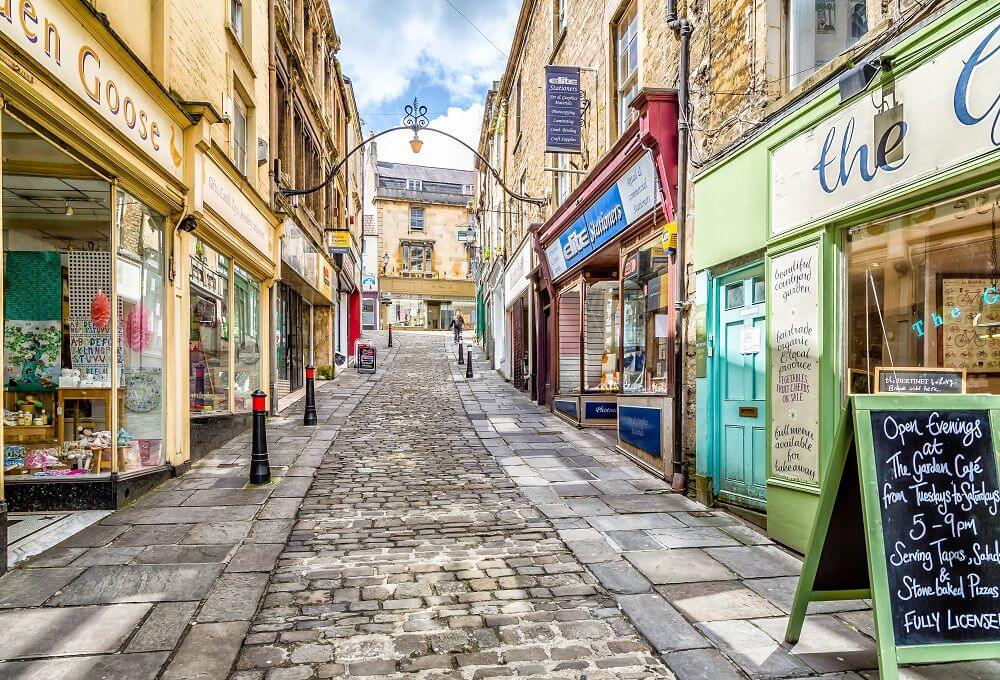
Catherine Hill is part of Frome’s ‘artisan’s quarter.’
The market town of Frome is a must for history lovers. As well as dozens of historic buildings, the town has even preserved its unique two-hundred-year-old gas streetlamps. Frome’s former textile mill has also been saved and converted into artists’ studios hosting exhibitions and events.
Foodies will enjoy browsing the market and the shops selling cheese, cider and local farm produce. The center of town boasts an artisan’s quarter home to galleries and shops selling jewelry, ceramics and textiles.
Walkers can head out of town to the villages of Mells and Nunney. For a proper hike, follow the East Mendip Way 25 KM through the rolling hills and woodland of Somerset to the old town of Wells.
Where to eat: Bistro Lotte is a popular restaurant sourcing food from local suppliers.
Where to stay: Rook Lane House is a bed and breakfast in a Grade II listed building in the center of town.
How to get there: By car: driving from London takes just over two hours via the M3. By train: depart from London Paddington and change at Westbury. The journey takes around 1 hour and 30 minutes (www.gwr.com).
Lyme Regis, Dorset
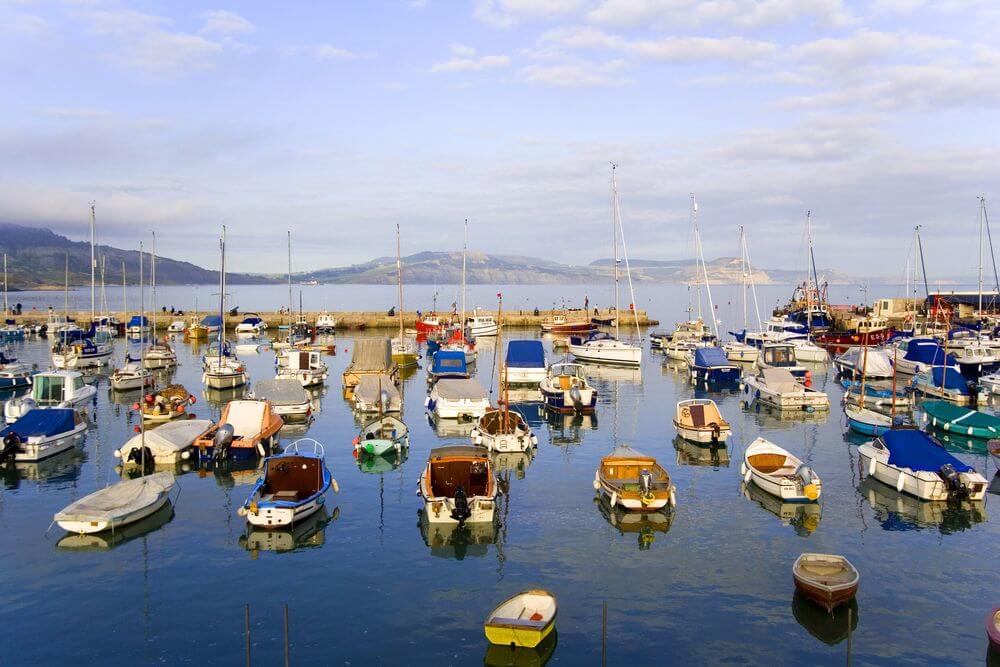
Lyme Regis has a sheltered harbor where you can kayak and SUP.
Lyme Regis is most famous as the home of Mary Anning, who dug up dinosaur skeletons and changed what people knew about the origins of the earth. Anning’s story is told in detail in the Lyme Regis Museum. You can also follow the coast to the Charmouth Heritage Coast Center, which has displays about local finds.
Elsewhere Lyme Regis has a lovely seafront promenade, beach and thirteenth-century harbor where you can kayak and SUP. The Town Mill is a restored working flour mill, with buildings converted into a brewery, art gallery and several studios where you can shop for handcrafted jewelry and ceramics.
Hunt for fossils on the beach, walk to Axmouth through the Undercliff National Nature Reserve which is a habitat for rare wildlife, or along the River Char to pretty Dorset villages.
Where to eat: Robin Wylde has a menu full of inventive, seasonal ingredients and local wines, ciders and beers.
Where to stay: The Pilot Boat has bright modern rooms in a Grade II listed building overlooking the sea.
How to get there: By car: driving takes around three hours via the M3. By train: take the train from London Waterloo to Axminster and then take the bus. (www.southwesternrailway.com).